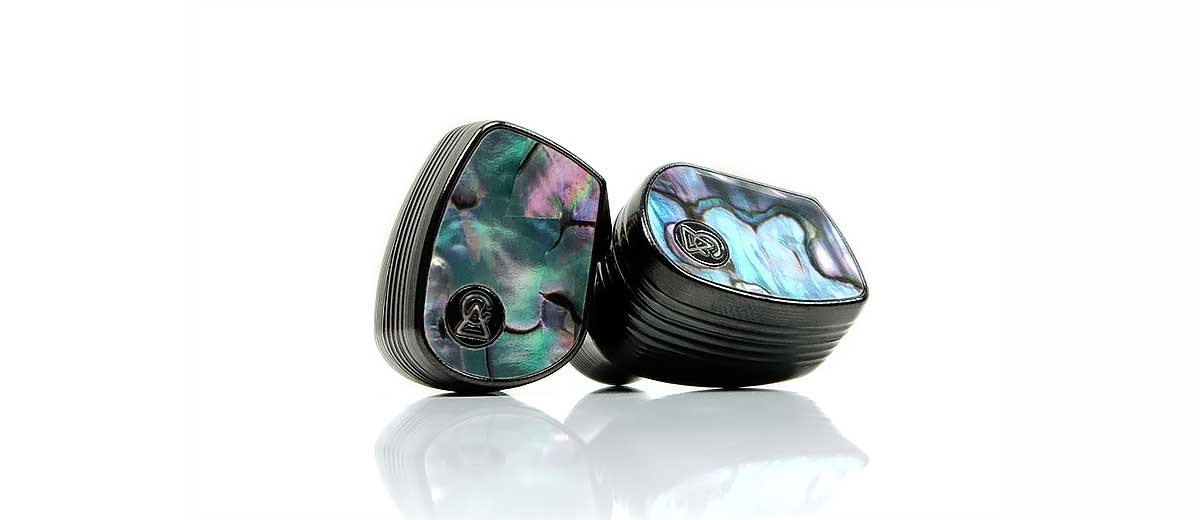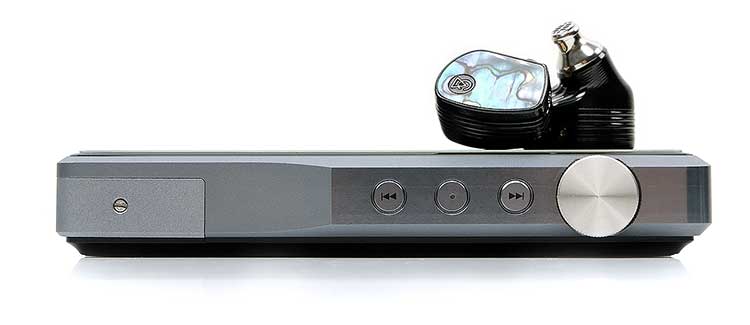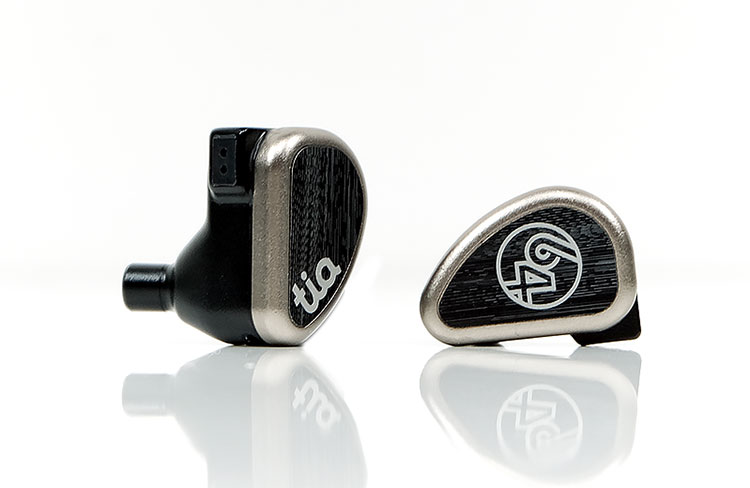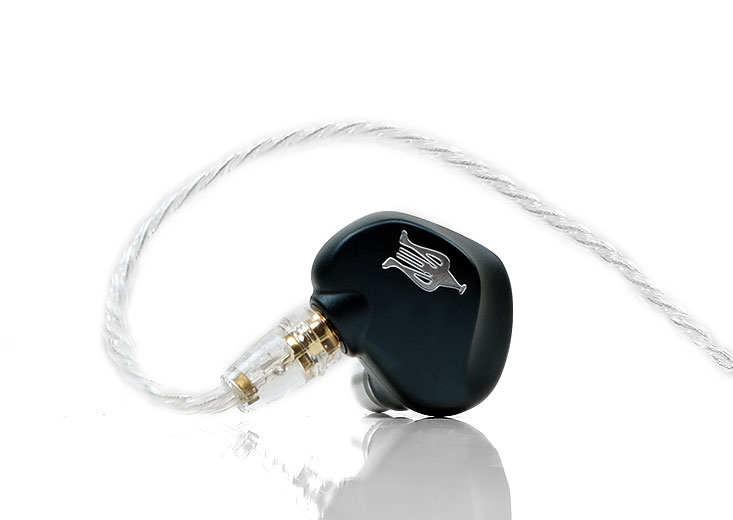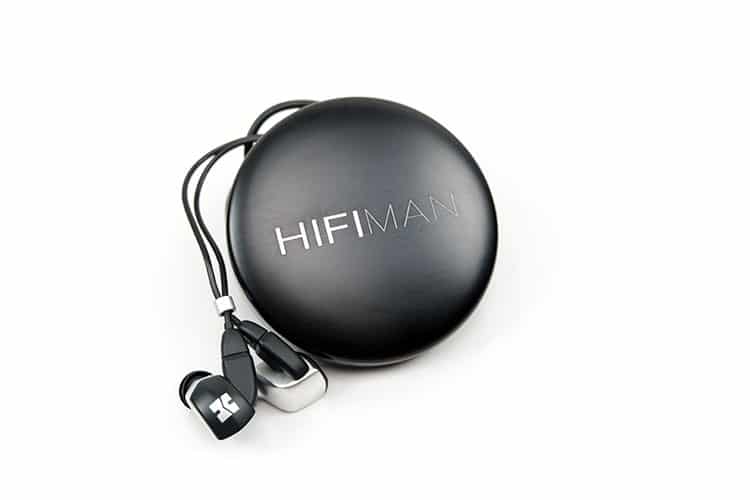Sound Impressions
Summary
I have always felt the Solaris is one of the best hybrid universal monitors in the market for its blend of musicality and technical capability. So how do you top something that is already pretty darn great, to begin with? The answer is you don’t really. Instead, you refine a few key areas and offer an enticing alternative sound signature. The rest may well be down to personal preference.
So, what is enticing about the Solaris SE compared to the Solaris? It has to be the midrange performance with that new driver. Out of that statement, there are two key points. The transition is now smoother from the bass to mids and also the treble slightly more liquid. As a result, you get point number two, a monitor that sounds less ‘hybrid’ than the original with far less of a dynamic driver and BA contrast.
Now for some, they might prefer the explosive quality of the original Solaris’s low-end and treble contrast. However, for others, the balancing of those elements with a richer and more prominent midrange will be entirely more suitable.
That does not mean the Solaris SE has suddenly developed a ‘safe n-shaped’ vocal-heavy dimension. The airiness and extension from the original remain unchanged as also the technical capability in terms of dynamic range and resolution.
Staging
The Solaris SE staging does have a subtle change for me. The new mids driver has enhanced the midrange presence a little bit better than the original which in turn draws the focus in a bit more to instrumental passages and in particular, male vocal texture.
On the original version, there was a tendency for me to hear the excellent depth or airy height and a little less focus on the mids. The mids had some good higher-pitched vocal or upper mids presence as well as an above-average staging width.
However, it did not carry a huge amount of weight and texture, especially some of the lower-mids instrumental and vocals. Hence, the contrast points such as percussion, low-end bass lines, and female vocals stood out a bit more as these are the elevated FR points. This is also where odd-harmonic contrast or low-end fundamentals are at their highest.
With the new Solaris SE, the mids now have that more rounded and forward staging presence. Lower-mids have less of a suck out with more body and presence. Male vocals are fuller sounding and easier to pick out than before. You are no longer pulled as much to the top-end or low-end but rather you get a better perception of engagement for the entire presentation.
I guess if you want a quick and easy summation the Solaris SE has the more natural soundstage and the Solaris original is the more vivid of the two.
Timbre
The timbre on the SE has indeed changed and I would take the ending statement regarding a natural soundstage and run with that also in terms of a more natural-sounding instrumental and vocal timbre.
The original Solaris timbre is full of vivid contrast but it also lacks a little bit of wetness and body. You get a strong fundamental underlying it and plenty of upper-harmonic presence but the even-harmonic overtone was on the shorter side of things.
That effects voicing in terms of texture and fullness and an instrumental presence that is attack-dominant, very nicely separated but on the cooler and ‘steelier’ side of things.
The SE peels back a little of that contrast and adds a more liquid and sweeter sounding overtone. I suspect the mid-range driver is giving the lower-mids an earlier lift in the FR than the original Solaris mids BA driver so they sound less sucked out and a little warmer.
This timbre sounds more ‘blended’ with better sustain between the attack and decay and a more pleasing harmonic distortion or 2nd order harmonic presence. It is much more suited to vocal performances, especially male vocals which get more of an ‘analog’ nature coloration especially chest voices.
Synergy
Efficiency
The Solaris SE has a weighted rating of 115dB SPL and 10Ω output resistance. That is the same weighting and measurements of the original Solaris. As a result, the analysis from the original Solaris review in terms of efficiency applies here also.
The only different outcome in terms of volume will be a preference-based choice in line with the tweaked sound signature. That slightly smoother upper mids performance might encourage a higher tolerable volume.
It also means that the Solaris SE is as sensitive as the original, possibly one of the most sensitive outside of the Empire Ears Zeus. Campfire Audio readily admits their BA drivers err to the more sensitive side so there will be no issue driving the Solaris SE but higher noise floors will be easily picked up.
That being said, the Solaris SE still does a better job in suppressing that hiss than the Andromeda which was the case with the original Solaris. Good noise floor pairings included the Lotoo PAW Gold Touch in low gain and budget DAPs such as the new HiBy R3 Pro.
The FiiO M15 and the Cayin N6ii (E01 motherboard pairing) did have a higher noise floor but it was quite manageable. The Sony 1Z unbalanced and the FiiO M11 noise floors were that bit higher but again, reasonably manageable. The Solaris SE did struggle with the likes of Hifiman’s R2R2000. It’s default current and gain setting are much too aggressive for this monitor.
Pairings
Honestly, given the ease at which you can drive the Solaris SE, you can pair almost anything with it in terms of headroom. The rest will be down to tonal preference and how much you like to EQ. However, if you are a stickler for noise then, as above, you want to be avoiding high noise floor sources and amps.
Technical Masters
If you are going for a stock sound with no EQ or DSP then I actually found the Sony 1Z and the Cayin N6ii with the E01 motherboard to play to the strengths of the Solaris SE better than the Lotoo PAW Gold Touch or the iBasso DX220 with the Amp 1 MK2 (stock package).
The Touch will offer the blackest background by far of the 3 DAPs and possibly the most technically proficient also. However, it is quite neutral and clean sounding and doesn’t quite have the same richness in the mids of the Solaris as the other two DAPs. With the BAs at play in the mids, I kind of prefer how the richer warmer DAPs disguise that and add a bit more texture and body.
The iBasso DX220 with AMP 1 MK2 is almost the same in terms of general feel with a very balanced and expansive sound when paired with the Solaris SE. However, I felt the sound was perhaps too linear and the Solaris SE is not a reference tuning for that type of synergy. Better to go with AMP8 or AMP9 and get some warmth and character into the Solaris SE low-end and mids.
True, those amp cards are coloration but the case for these two DAPs rests on whether you want the cleanest purest sound with the Solaris SE. Especially the dynamic range which is outstanding on the Lotoo for classical genres.
Coloration Kings
If you are after a euphonic timbre and a more planted sound then the Cayin N6ii/E01 combo, (Class AB), is a compelling choice for the Solaris SE. The improved vocal texture on the Solaris SE plays to the strengths of the E01 motherboard’s Class AB punchy and dense sound.
The Sony 1Z takes a slightly different route with the Solaris SE compared to the Cayin. It too teases out a nice planted low-end response when it gets going. The bass is textured, weighted, and with more warmth than the Touch.
However, the decay seems a little drier than the Cayin, perhaps a bit more digital sounding overall and it lacks a bit of oomph for vocals. I suspect the Cayin teases out a bit more upper treble on the Solaris SE than the Sony and in turn, gives it a livelier but sweeter sound.
Select Comparisons
64 Audio Tia Trio
$2299
Technical
I am a big fan of the tia Trio and for good reason with its expansive low-end and detailed mids to top-end performance. This is a hybrid universal monitor but like the Solaris SE it is not packed to the gills with driers, in fact, just 3.
The configuration is 1 tia high, 1 high-mid, 1 back-vented 10mm dynamic driver for the mids and lows. The Solaris SE hybrid configuration is dual Custom BA for the highs, a single BA for the mids, and a 10mm DD for the lows.
The interesting thing is that both monitors use a form of tubeless engineering for the highs and special acoustic chamber venting for the lows. For CA, it is their tried and tested T.A.E.C. and for 64 Audio, it is ‘tia’.
One further feature not in the Solaris SE is the built-in APEX module on the tia Trio which reduces pressure on the eardrums from sound waves and is specifically for prevention of long-term hearing damage. It is a big plus for me and I do use this monitor a lot for airline travel due to how well the tia Trio manages in-flight pressure variation compared to customs.
Design
The Solaris SE is much more exotic looking than the tia Trio. You can tell right away that it is built with a higher grade of materials and maybe the more durable of the two. However, I give credit to the tia Trio’s smaller form factor which is more comfortable in the ear. Both seal in a similar fashion with foam tips my preferred choice for both monitors.
One further difference is the use of MMCX versus 2-pin. Both have their fans with the 64 Audio using 2-pin and the Solaris SE using MMCX. I will say the stock SuperLitz cable that comes with the Solaris SE is of a higher performance grade over the tia Trio stock.
Performance
The tia Trió™ is rated at 5.5Ω and 104dB SPL which is a bit of a contrast to the 10Ω and 115dB of the Solaris SE. Whilst neither will really tax the power of any half-decent amplifier or source, it is the big gap in their SPL ratings that will produce a qualitative difference in terms of current demand.
For example, the Lotoo PAW Gold Touch, our reference DAP, had up to a 15 step difference or roughly around 7dB difference in the current demand between the two monitors. That also means the Solaris SE is much more sensitive to any residual background noise on the signal path.
The Lotoo behaves impeccably with the Solaris SE and the tia Trio so it is hard to discern a difference between the two. However, once you move to higher noise floor DAPs such as the FiiO M11 then you can hear hiss with the Solaris SE whereas the tia Trio stays fairly quiet on low volume.
The FiiO M15 is a better pairing with the Solaris SE in terms of low levels of noise, but it is still not as black as the trio pairing. Also, you need to watch for the aggressive M15 volume as the Solaris SE is quite sensitive to that.
Tuning
Just to keep things even I test both with a SuperLitz cable. With the stock tia Trio cable, I felt the performance was a bit lifeless, especially in the mids whereas the SuperLitz infused Solaris SE sounded more dynamic.
The core presentation of the Solaris SE still has this sense of urgency that is missing in the Trio midrange when the cables are matched, however. There is definitely more of an elevated presence in the Solaris SE midrange that helps tease out a more vivid vocal performance. Even on the low-end, the tia Trio sounds the more languid and relaxed of the two.
Comparing the two it seems the tia Trio dynamic driver might have a shade more weight below 50-80Hz but the decay is longer and the mid-bass warmth a bit more tangible. It does feel the slower of the two dynamic drivers but also the more powerful. The Solaris SE is definitely the punchier of the two dynamic drivers.
As a result of that elevation and engaging vocal delivery, the Solaris SE can sound the more intimate of the two, the vocal performer. The timbre also has a bit more solidity to it, a bit more sustain in percussion notes particularly.
The trio timbre is more ethereal in tone with a lighter timbre beyond the mids. There does seem to be more upper treble presence and air in the tia Trio.
Meze Rai Penta
$1099
Technical
The Rai Penta sits on the lower end of the price scale but still above the $1k marker. This is also a hybrid configuration with using a single 10mm dynamic driver and a quad balanced armature setup.
The grouping is a dynamic driver for the lows and 2 BA for the mids and 2 BA for the highs. This does have an additional driver over the 4-driver hybrid Solaris SE but it is a tubed design with any tia or T.A.E.C so quite a different approach. Instead, it uses a precision milled sound bore design with a variable-length steel tube construction rather than silicone or plastics to control the airflow.
For the acoustical chamber, both also have differences with the Rai Penta combining the milled steel bores with their P.E.S. or their dual venting system to allow the driver to breathe for optimal performance.
The Solaris SE uses a 3-D printed acoustical chamber with a high-density ceramic finish to that acoustical chamber to further tweak how the DD and mids BA interact for staging and vocal delivery.
Design
Both are exquisite but approach design in a very different manner. The Solaris SE approach is louder, flashier whereas the Rai Penta is elegant and subtle. The dark blue CNC sculpted chassis of the Rai Penta looks incredibly complex close up whereas the Solaris SE uses a richer blend of materials and textures for its own specific look.
The Rai Penta is the smaller of the two monitors by far and has a lot less pressure on the ear canal compared to the Solaris SE. Two different approaches – pressure versus sculpted seal. The large venting on the Rai Penta means the seal is not as good as the Solaris SE, however. If you can trade the additional pressure the Solaris SE blocks out more environmental noise.
Both use MMCX but the Rai Penta clasping system is a generation behind the new circular beryllium locking of the Solaris SE. I dare say the Solaris SE MMCX will last a bit longer as a result.
Performance
The Rai Penta is rated at 20Ω and 110dB SPL compared to the Solaris SE’s much more sensitive 10Ω and 115dB SPL. The comparison between these two follows a similar pattern as the tia Trio in terms of synergy pairings.
Neither has an issue with weaker sources and amps. Both will drive fine with plenty of headroom unbalanced and low gain from the likes of the Lotoo PAW Gold Touch and FiiO’s M15.
The current demands are quite different however and I did find that the 5dB SPL rating gap fairly accurate on the Gold Touch with a 10-step gap between the two on the 3.5mm unbalanced low gain output. The Rai Penta does need more volume to match but it is not massive.
The Rai Penta is less sensitive to background hiss, and channel balances better on lower volume with the likes of the FiiO M11 and M15 but then that should not be a surprise. The Solaris and the SE are my most sensitive IEMs outside of the Empire Ears Zeus.
Tuning
The Rai Penta is a slightly more M-shaped warm sounding presentation with a vocal and mid-bass emphasis. The Solaris SE also has similar bumps but with additional treble energy and contrast. It sounds a little cooler in part or cleaner than the Rai Penta.
On the timbre side, the Rai Penta does very well indeed in terms of a consistent tone throughout despite using a hybrid configuration. With the Solaris SE, there is more of a distinct contrast but it is done in a way to tease out different aspects of the presentation more than a drawback. With the Rai Penta, you do not hear that much difference between the low-end dynamic timbre and the mids and highs BA timbre.
It is really the dynamic range of the Solaris SE that sets it apart from the Rai Penta. You can’t really deduce that from any FR chart. The Solaris SE sounds more resolving, punchier, and faster, particularly on the low-end and treble. Vocals are more vivid, the soundstage more complex and spacious sounding.
The Solaris SE tends to make the Rai Penta sound comparatively “small” and a bit shallower in terms of staging despite the Rai Penta using an additional BA driver.
Hifiman RE2000 Silver
$1500
Technical
The RE2000 Silver is a modified and slightly cheaper version of the original gold RE2000 from 2017. This is quite a different approach to a universal monitor compared to the Solaris SE.
The RE2000 Silver uses a single 9.2mm dynamic driver with a nanoparticle coating applied to the surface which Hifiman claims can be tweaked to produce a preferred sound signature better than regular DD designs. This is a stark contrast to the hybrid single A.L.D.C. 10mm dynamic driver and triple BA configuration of the Solaris SE.
Some audiophiles love a single dynamic driver design. Heck, even Ken himself loves dynamic timbre more than BA and their Atlas and Vega launches are a testimony to that. Something about the coherence of a single driver timbre sets it apart. That is if it is tuned correctly.
Design
The RE2000 Silver is an aluminum and plastic design and much lighter and smaller than the Solaris SE. The Solaris SE looks better built with a more premium look. The materials look a much higher grade also on the Campfire Audio model.
Both fit quite well but the lack of tips choices with the RE2000 Silver let it down. You can get good isolation from the quirky design but only if you use 3rd party tips. I do use the triple flange design mostly with the RE2000 Silver as it penetrates deeper and helps with the seal. With the Solaris SE, the supplied foams do their magic and block out background noise a lot better than the RE2000 Silver.
Cables are also another interesting contrast. The RE2000 Silver uses a silver-coated crystalline copper wire but no real information beyond that in terms of 4 or 8 wire and gauge. It is finished with a rubbery but low microphone jacket and a bulky 3.5mm jack.
It is not a snazzy as the SuperLitz, to be honest, in build or looks. The 2-pin connector used by the RE2000 Silver is also quite deep and proprietary in the design flow. You can fit aftermarket cables but it looks a bit ugly. The Solaris SE cable system flows better and feels stronger also.
Performance
The RE2000 Silver’s rating is much more demanding than the Solaris SE at 60Ω and 103dB SPL compared to just 10Ω and 115dB SPL. On our sources, the RE2000 Silver was incredibly demanding on low-gain unbalanced connections.
For example, the PAW Gold Touch was almost 30 steps higher than the Solaris SE. It lacks sensitivity to minute stepped adjustments so you can easily grab about 5 steps to appreciate any serious rise in volume. It does really well with the aggressive volume adjustment on the FiiO M15 whereas the Solaris SE pairing might be better locked to prevent accidental bumps such is the heightened sensitivity.
Noise is not an issue with the RE2000 Silver, rather amplification, and how much power is the key question. I couldn’t get away with pairings on weak sources and phones using the RE2000 Silver whereas the Solaris SE is much more adept with weaker outputs.
Tuning
The first thing you will notice is just how much more V-shaped the RE2000 Silver is compared to the Solaris is. And it is warm V-shape rather than an exaggerated low-end and treble contrasting classic ‘V’ tuning.
The second thing you will notice is the timbral coherence of the RE2000 Silver using that single topology dynamic driver. You can pick up the contrasting timbres of the DD and BA in the Solaris SE more readily but neither are without their pros and cons.
Personally, the Solaris SE does better with micro-detail from the mids upwards with the use of those BA. The timbre has more contrast, and instruments have a little more separation as a result.
The RE2000 Silver timbre is smoother throughout with a wonderful natural tone to vocals that sometimes the Solaris SE can struggle to compete with. Definitely, you can pick out the better sustain and body on the RE2000 female vocals compared to the leaner BA timbre of the Solaris SE.
Where the RE2000 Silver falls behind is the low-end. It is warm and elevated with good depth but has a bit too much bloom and decay for me making it soft sounding. The Solaris SE 10mm driver is more linear, at times punchier, and tighter sounding.
Our Verdict
We all have our preferences, mine are the mids and I have alluded to that many times in my reviews. However, I always defer my conclusions to what or whom I think an audio product would appeal to.
In the case of the Solaris SE, I believe Campfire Audio has produced something closer to my own preference for a top-tier hybrid sound but in no way sacrificing a lot of that technical capability of the original Solaris.
The sound is smoother, more coherent with a better mids presence. The timbre is more natural to my ear and sweeter sounding for vocals and instrumental notes. This is a clever tuning with less of an apparent traditional hybrid driver separation from the lows to the highs.
However, I still think some will be dead set on the vivid and exciting ‘contrasty’ sound of the original. That is choice and that is fundamentally a good thing because you can save yourself $400 if the sound is right for you.
If you are like me however, I would give the nod to the new SE, because I think this is where CA should be going with hybrid tuning in terms of creating a clear but natural flagship ‘house sound’.
Campfire Audio Solaris SE Specifications
- 5Hz–20 kHz Frequency Response
- 115 dB SPL/mW Sensitivity
- 10 Ohms @ 1kHz Impedance
- Less than 1% Total Harmonic Distortion

